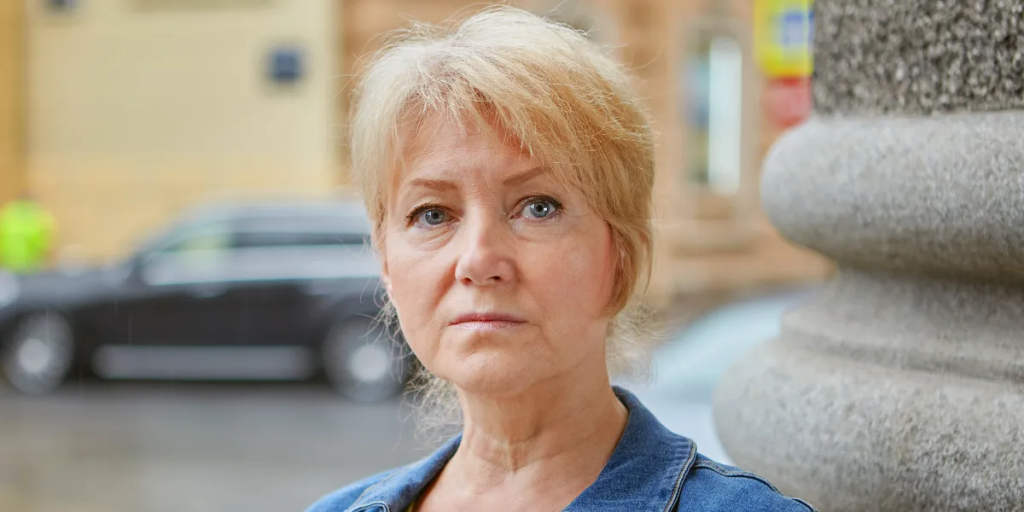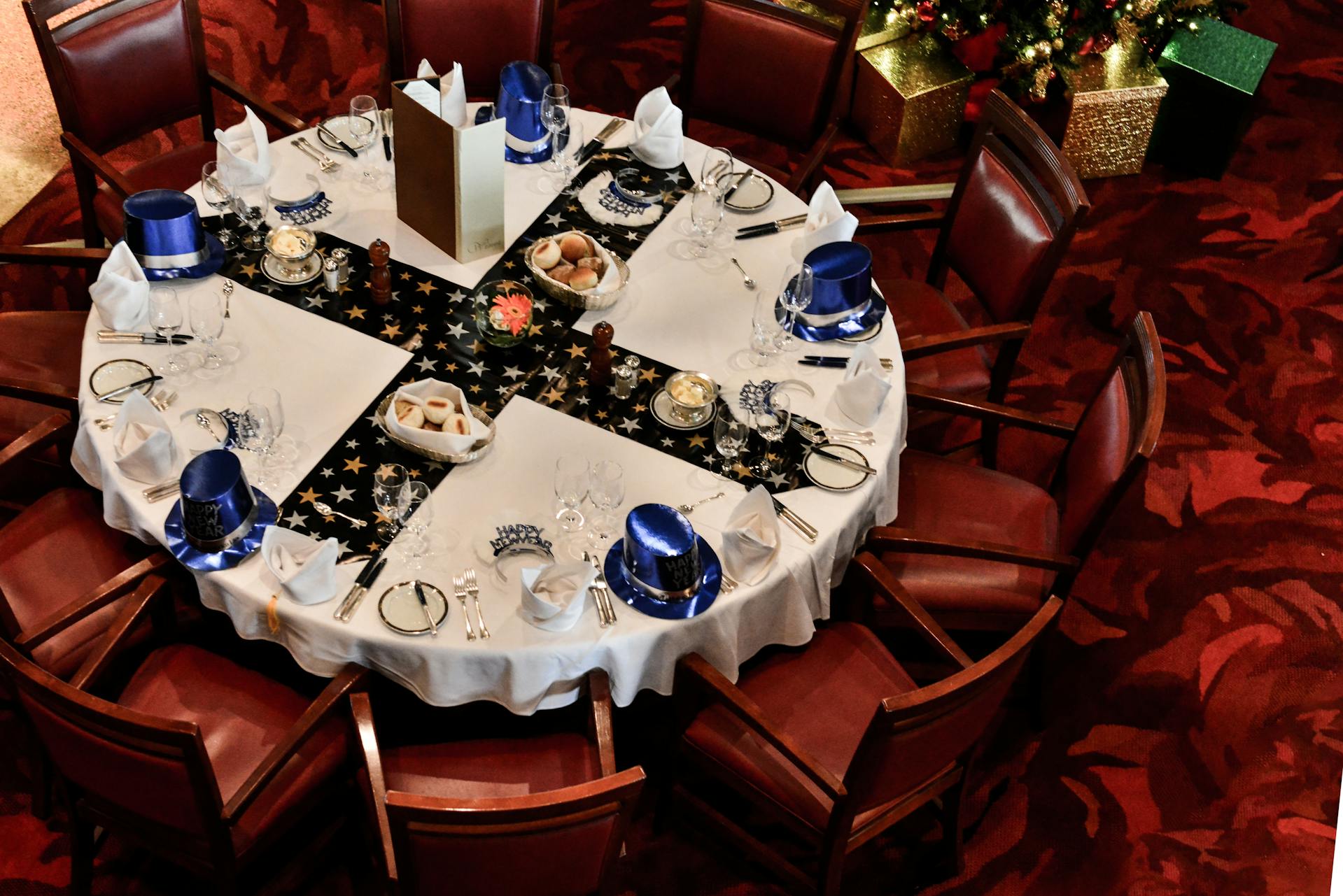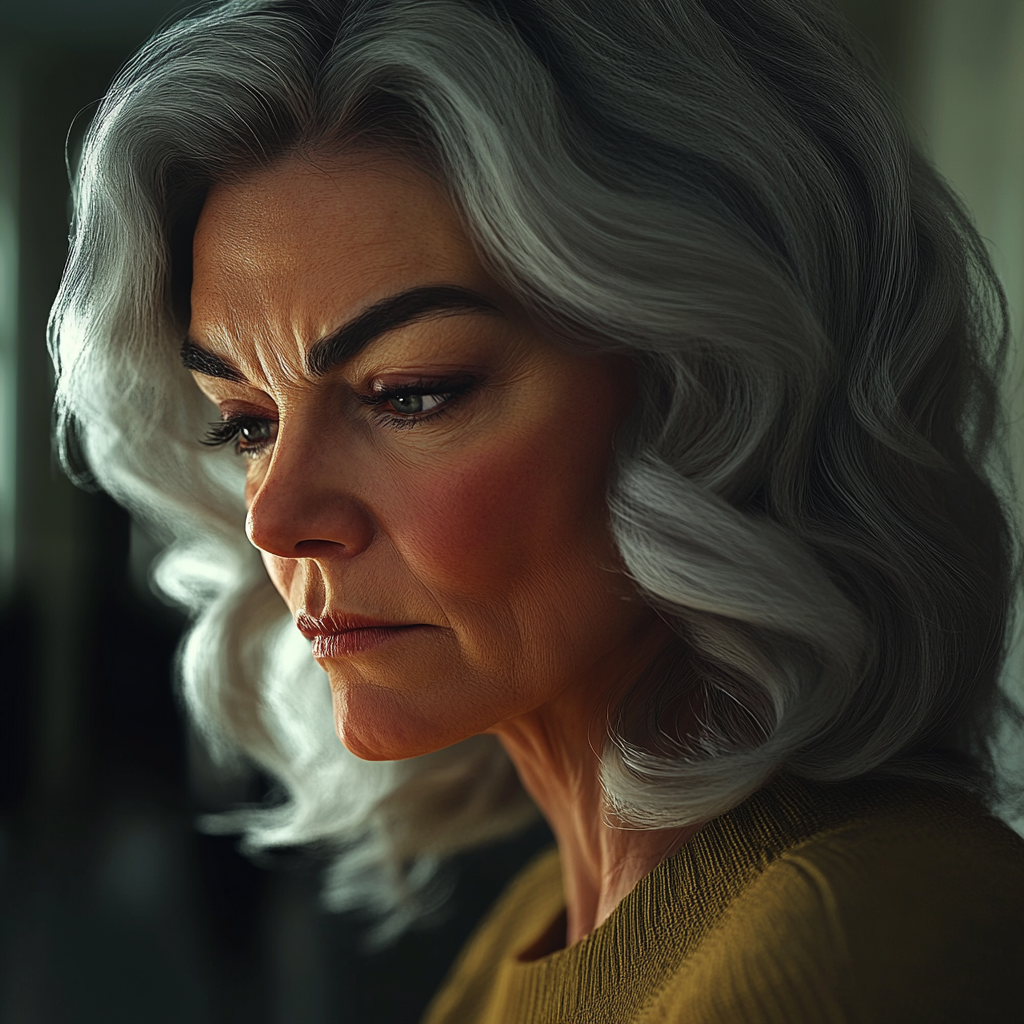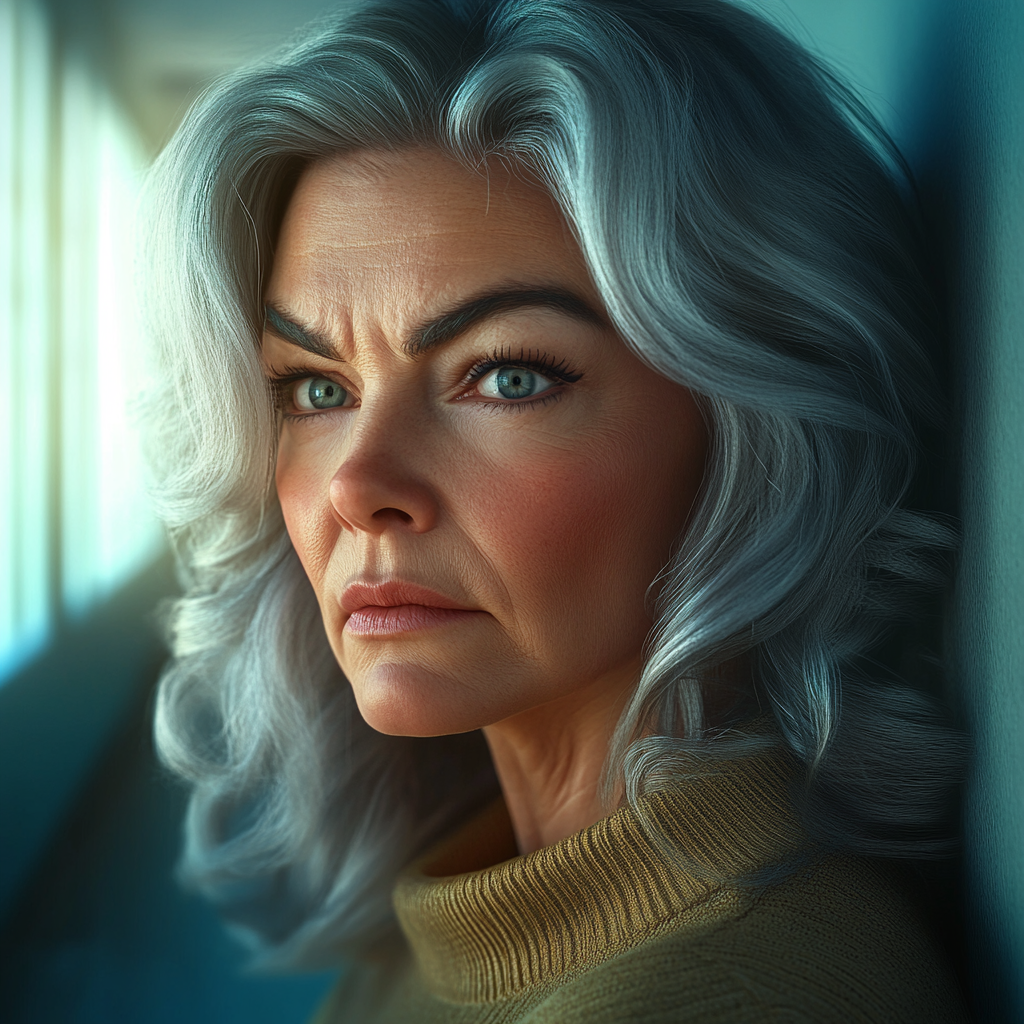
Deemed a “Dystopian Apartment,” a building in China has recently gone viral on TikTok. Incredibly, it has the ability to host up to 30,000 residents.
The video was posted by @fatheristheone using a drone and caught people’s attention for more than just the impressive interior and unique design.
People were also astonished after seeing footage that truly captivates the enormity of the building.
Many people have read at least one novel focusing on a Dystopian society. Or at least understand that it describes a society that lives in fear or has been dehumanized.
Most works have been fiction, although some might argue they’re a possible warning about the future.
Either way, China currently has an apartment building that can house up to 30,000 residents at one time. Furthermore, containing everything residents could possibly need.
Features of the Dystopian Apartment
The “dystopian” apartment, called the Regent International, is located in Qianjiang Century City, more specifically, in Hangzhou’s central business district.
The building was actually designed by Alicia Loo, chief designer of a 7-star hotel called the Singapore Sands Hotel, and was inaugurated in 2013.
Impressively, the building is 675 feet tall and is currently home to around 20,000 residents. It is an S-shape and has 36, or 39, floors depending upon which side of the building you are.
Unsurprisingly, it’s one of the most densely populated areas in the world, thanks to the numerous residents coexisting under one giant roof.
Within the more than 30 floors of the Regent International, there are a number of amenities. Some include restaurants, swimming pools, and nail salons.
The building also contains its own grocery stores and internet cafes. Essentially, anything one might find “in town” can be found indoors the “dystopian apartment”.
As a result, many residents may never step foot outside again. Posing the question, will they also never get any fresh air or feel the sunlight on their skin? First, the residents aren’t forced to stay indoors, nor are they forced to live in the “dystopian apartment.”
In contrast, most residents are young professionals and influencers or college students. Both of them greatly benefit from the cost-effectiveness and convenience of living in a place such as an S-shaped building.
Advantageous Living
Living there seems to be incredibly convenient for residents as they have everything they could possibly need under one roof.
Convenience isn’t the only advantage. Its affordability is another great benefit to living at Regent International.
Units vary in size and cost but range from 1,500 RMB, which is equivalent to around $200.00 per month, to 4,000 RMB, which is just under $600.00 per month.
While some are apprehensive, calling it a “dystopian apartment,” others have praised the innovation behind the building. It’s even been called “the most sustainable living building on earth.”
Another interesting advantage comes to light in the midst of a housing crisis that is seemingly sweeping the U.S. The “dystopian apartment” could serve as a model for how the U.S. can possibly create more living spaces for people without taking up copious amounts of land.
Interestingly, one state has already developed something like the hotel turned apartment city. Whittier, a city in Alaska, has a 14-floor building in which all 272 residents live. It, like the building in China, has everything one would find “in town.” This includes a church, school, post office, and police station.
Possible Downsides
Like everything in life, this, too, has pros and cons. After all, the building has been referred to as “dystopian apartment” for a reason.
As previously mentioned, many people are wondering how so many people can live in one place. U.S. residents tend to prefer privacy. Space from their neighbors. Even a yard to hang out in or for their dogs to play.
A major drawback to a housing solution like this is that people will have very little space of their own, with little opportunity to be outdoors or get fresh air. Luckily, the problem of getting fresh air can be remedied by taking a stroll or renting one of the larger units in the Regent International, as some come with balconies, providing some relief from living in there.
A mãe do meu namorado não me queria na família, então fiz uma oferta que ela não pôde recusar

A mãe do meu namorado me olhou e decidiu que eu não era boa o suficiente para o filho dela. Eu não era rica nem glamorosa, e definitivamente não era o que ela imaginava. Mas eu não recuo diante de um desafio. Então, em vez de brigar com ela, fiz uma proposta… uma que ela seria tola se recusasse.
Quando a mãe do meu namorado olhou para mim como se eu fosse algo que o gato arrastou pela lama, mergulhou no esgoto e jogou direto no tapete de grife dela… eu tinha duas opções: enfiar o rabo entre as pernas e sair correndo, ou ficar parada e garantir que ela soubesse que eu não iria a lugar nenhum.
Eu escolhi a opção dois…

Uma mulher emocionalmente sobrecarregada | Fonte: Midjourney
“É tão bom finalmente te conhecer”, disse Linda durante nosso primeiro encontro, seus olhos me percorrendo da cabeça aos pés. “O Ryan nos contou… algumas coisas sobre você.”
A pausa antes de “algumas coisas” pairava entre nós como uma acusação.
Não foi como se eu tivesse feito algo errado. Fui simpática. Levei os quadradinhos de limão favoritos dela, que o Ryan sugeriu. Complementei a casa imaculada dela com fotos de família cuidadosamente organizadas… nenhuma delas jamais me incluiria se dependesse “daquela” vontade.

Uma mulher mais velha irritada | Fonte: Midjourney
“Essas fotos são lindas. Sua família tem memórias maravilhosas”, eu disse.
“Sim, somos muito criteriosos sobre quem se torna parte deles”, ela respondeu com um sorriso que nunca chegou aos seus olhos.
Por mais que eu tentasse, eu sentia que ela me avaliava sempre que estávamos no mesmo ambiente. Como se eu fosse um item em promoção que ela não conseguia acreditar que o filho dela tinha comprado.
Para ser justa, Ryan é o orgulho e a alegria dela. Ele é um cara que se fez sozinho, bem-sucedido, tem sua própria casa e dirige um carro chique. Na cabeça dela, ele é basicamente o grande prêmio de um game show. E eu “não era” exatamente a concorrente glamorosa com quem ela imaginava que ele ficaria.

Um homem elegante parado perto de seu carro luxuoso | Fonte: Midjourney
“Você acha que sua mãe vai se aproximar de mim?”, perguntei a Ryan certa noite, depois de mais um tenso jantar em família.
Ele me puxou para perto, sua testa encostando na minha. “Não deixe ela te afetar. Ela é só protetora.”
“Protetor ou territorial?” murmurei contra seu ombro.
Ryan riu baixinho. “Os dois, provavelmente! Mas eu te amo. Mamãe vai mudar de ideia. Só dê um tempo a ela.”
Bem… o tempo não estava exatamente a meu favor. Seis meses depois, as coisas só pioraram.

Um casal de mãos dadas | Fonte: Unsplash
A questão é que sou apenas uma professora, criada por uma mãe solteira. Venho de uma família normal, com uma vida normal e um salário normal — sem fundo fiduciário nem guarda-roupa de grife. E eu definitivamente não era a nora chamativa que a Linda deve ter imaginado para o Ryan.
Depois de meses de jantares familiares estranhos, olhares de soslaio aleatórios e seus comentários sutis sobre como “naquela época, os homens gostavam de mulheres com um pouco mais… a oferecer”, eu finalmente surtei.
Não externamente, porque sou controlada demais para isso. Mas algo dentro de mim se quebrou e se reformou com uma nova determinação.

Uma mulher de coração partido olhando para alguém | Fonte: Midjourney
Eu estava mexendo meu café na manhã seguinte à exclusão “acidental” que Linda me fez de um evento familiar, quando decidi que já era o suficiente.
“Você parece estar tramando algo”, disse Ryan, beijando o topo da minha cabeça a caminho da geladeira.
Sorri para ele. “Só pensando.”
“Sobre?”
“Sua mãe.”

Um homem olhando para alguém | Fonte: Midjourney
Os ombros dele ficaram ligeiramente tensos. “E ela?”
“Acho que está na hora de termos uma conversa. De mulher para mulher.”
Ryan arregalou os olhos. “Tem certeza de que é uma boa ideia?”
Concordei. “É isso ou mais cinco anos de comentários passivo-agressivos sobre minha escolha de carreira e o fato de minha mãe fazer compras em outlets.”

Uma mulher desanimada | Fonte: Midjourney
“Ela não quis dizer —”
Coloquei meu dedo nos lábios dele. “Ela está falando sério. Mas não se preocupe. Não vou piorar as coisas.”
Ryan pareceu em dúvida. “Promete?”
“Prometo. Na verdade, acho que as coisas podem melhorar.”
“Isso sim”, ele riu, “seria um milagre”.
“Só fique me observando trabalhar”, eu disse, já pegando meu telefone.

Foto em close de uma mulher segurando o telefone | Fonte: Unsplash
Mandei uma mensagem para ela naquela tarde.
“Oi, Linda, aqui é a Jenna. Eu adoraria sentar e conversar… quando for melhor para você.”
Ela respondeu horas depois, tempo suficiente para deixar claro que eu não era uma prioridade.
“Tudo bem. Apareça às seis.”
E deixa eu te contar, eu sabia exatamente o que ela estava pensando. Ela provavelmente estava andando de um lado para o outro na cozinha, dizendo a si mesma que aquele era o momento em que eu anunciaria alguma notícia dramática para prender Ryan para sempre. Gravidez? Fuga para casar? Quem sabe!
Mas a verdade é que eu só queria esclarecer as coisas e fazer uma oferta que ela não pudesse ignorar.

Uma senhora idosa chocada olhando para o celular | Fonte: Midjourney
Cheguei às 17h58, segurando uma caixa de doces daquela padaria chique da qual ela sempre se gabava. Ela mal olhou para eles quando entrei. Me levou direto para a mesa da cozinha como se estivéssemos prestes a negociar um contrato comercial.
A cozinha dela estava impecável, com bancadas reluzentes, e nenhum prato à vista. Era o cenário perfeito para o confronto que ela esperava. Assim que nos sentamos, não perdi tempo.
“Linda, vou ser sincera com você. O Ryan me pediu em casamento. Eu aceitei. Ele ainda não te contou porque… bem, ele está preocupado com a sua reação.”

Silhueta de um homem pedindo sua namorada em casamento | Fonte: Pexels
Seu rosto se contraiu, seus dedos se curvaram em torno de sua xícara de chá até que seus nós dos dedos ficaram brancos.
“Ele pediu você em casamento? Sem discutir comigo primeiro?”
Engoli a resposta óbvia… que homens adultos normalmente não pedem permissão às mães para fazer o pedido de casamento.
“Ele queria te contar pessoalmente, mas está… preocupado.”
Ela cruzou os braços, e a pulseira de ouro em seu pulso tilintou suavemente.
“E por que eu ficaria tão feliz? Eu só acho que o Ryan poderia… se sair melhor. Com alguém que combine com o estilo de vida e o futuro dele. Você é… bom, você é legal, mas eu esperava algo diferente dele.”

Uma mulher mais velha confusa | Fonte: Midjourney
As palavras feriram, mesmo eu já as esperando. Há algo em ouvir seus piores medos confirmados que tira o fôlego, não importa o quão preparado você pense estar.
“Exatamente. É por isso que estou aqui”, eu disse, mantendo a voz firme. “Quero fazer um acordo.”
Ela inclinou a cabeça, cética. “Combinado?”
Inclinei-me um pouco e sorri. “Sim. Um acordo entre você e eu.”
“O acordo é o seguinte. Você me dá uma chance de verdade. Pare de tentar mudar a opinião do Ryan e, em vez disso, deixe-me provar quem eu realmente sou. Não a versão que você construiu na sua cabeça.”
Os olhos de Linda se estreitaram, mas eu pude ver que tinha sua atenção.

Uma mulher sorrindo | Fonte: Midjourney
“Você passa um tempo de verdade comigo. Jantares, feriados, seja lá o que for. Sem comentários indiretos, sem provocações. Só… tente. E se, depois disso, você ainda achar que eu não sou boa o suficiente para ele? Tudo bem. Eu respeito isso. Não vou causar drama. Mas até lá, você tem que parar de nos sabotar nos bastidores. Combinado?”
Linda me encarou, e eu praticamente conseguia ver as engrenagens girando. Não era essa a conversa que ela esperava quando abriu a porta. Finalmente, ela se recostou na cadeira e cruzou os braços.
“E o que exatamente eu ganho com isso?”
Eu sorri. “Você fica em paz. Você descobre, de uma vez por todas, se eu sou realmente o problema que você pensa que sou. E, ei, se eu for tão horrível quanto você decidiu, você pode dizer ‘eu avisei’ depois. Mas se eu não for… talvez você finalmente consiga parar de se preocupar que seu filho esteja jogando a vida fora.”

Foto monocromática de um casal caminhando juntos | Fonte: Unsplash
Ela riu mesmo. Uma risadinha curta e surpresa, como se não esperasse que eu tivesse coragem.
“Você é mais direto do que eu pensava”, ela disse, me estudando com novo interesse.
“Descobri que isso economiza tempo.”
“Tudo bem”, ela disse lentamente. “Tudo bem. Combinado. Mas, só para você saber, não vou pegar leve com você.”
“Eu não esperaria que você fizesse isso”, eu disse. “Mas você pode se surpreender.”
E sabe de uma coisa? Ela estava.

Uma senhora idosa e severa conversando com alguém | Fonte: Midjourney
Não foi da noite para o dia, mas depois que ela parou de procurar motivos para me odiar, as coisas ficaram… mais fáceis. A primeira vez que fui lá para o nosso “jantar de negócios”, cheguei cedo e a encontrei com dificuldades para fazer uma receita.
“Precisa de ajuda?”, perguntei, parado na porta.
Ela olhou para cima, confusa. “Este molho está sempre quebrando. Não entendo por quê.”
Arregacei as mangas e fui até ela. “Deixa eu ver. Minha mãe me ensinou um truque para isso.”
Trabalhamos em silêncio por alguns minutos, mas era um silêncio diferente do anterior. Linda estava concentrada, em vez de hostil.

Uma mesa posta para o jantar em família | Fonte: Pexels
“Onde você aprendeu a cozinhar?” ela perguntou finalmente.
“Minha mãe. Ela tinha dois empregos, então, quando eu tinha idade suficiente, comecei a ajudar com o jantar.”
Algo mudou na expressão de Linda. “Minha mãe também tinha dois empregos. Só aprendi a cozinhar depois de me casar.”
Foi a primeira coisa pessoal que ela compartilhou comigo.
Ela começou a me fazer perguntas, perguntas de verdade… sobre minha família, meus alunos e meus planos. E eu perguntei sobre sua vida antes de Ryan, sobre como ela conheceu o marido e sobre quais eram seus sonhos.

Uma mulher cozinhando na cozinha | Fonte: Pexels
“Eu queria ser designer de interiores”, ela admitiu certa noite, enquanto lavávamos a louça. “Mas aí engravidei do Ryan e os planos mudaram.”
“Ainda não é tarde demais”, eu disse. “Você tem um olhar incrível para design. Sua casa é deslumbrante.”
Ela fez uma pausa, com água ensaboada pingando das mãos. “Você acha mesmo?”
“Sim, é verdade.”
No final do terceiro jantar, ela estava elogiando meu purê de batatas como se fosse a melhor coisa que ela tinha comido o ano todo.

Uma senhora idosa encantada sentada à mesa de jantar | Fonte: Midjourney
“O que você colocou aqui?”, ela perguntou, pegando outra porção.
“Segredo de família”, provoquei. “Mas posso te ensinar algum dia.”
Ela olhou para mim, olhou para mim de verdade, pelo que pareceu a primeira vez. “Eu adoraria.”
O ponto de virada aconteceu cerca de dois meses depois do início do nosso contrato. Recebi uma ligação do Ryan no meio do horário escolar.
“É a mamãe”, disse ele, com a voz tensa de preocupação. “Papai está no hospital. Ataque cardíaco. Você pode…”
“Estou indo”, eu disse, já pegando minha bolsa.

Uma mulher assustada falando ao telefone | Fonte: Midjourney
Encontrei Linda na sala de espera do hospital, sozinha e pequena, sentada numa cadeira de plástico desconfortável. Quando ela me viu, seu rosto se contraiu.
“O Ryan está a caminho”, eu disse, sentando-me ao lado dela e pegando sua mão. “O que aconteceu?”
“Ele simplesmente desmaiou”, ela sussurrou. “Num minuto estávamos discutindo sobre o trabalho no quintal, e no outro…” Sua voz falhou.
Fiquei com ela por horas, fui buscar café, conversei com enfermeiras e me certifiquei de que Linda comesse alguma coisa. Quando Ryan finalmente chegou, nos encontrou aconchegados, meu braço em volta dos ombros da mãe dele enquanto ela cochilava junto a mim, exausta de preocupação.
O olhar em seu rosto valeu cada momento de tensão que havíamos vivenciado.

Uma mulher idosa triste | Fonte: Midjourney
“Obrigado”, ele sussurrou sobre a cabeça da mãe.
Eu apenas assenti. Não se tratava de marcar pontos. Tratava-se de estar presente quando alguém precisasse de você.
Mais tarde, quando os médicos confirmaram que seu pai se recuperaria, Linda me abraçou… realmente me abraçou pela primeira vez.
“Você não precisava ficar”, ela disse.
“Sim, eu fiz”, respondi simplesmente. “É o que a família faz.”
Ela olhou para mim por um longo momento e então disse algo que mudou tudo: “Eu estava errada sobre você”.

Uma mulher emocionada olhando para alguém | Fonte: Midjourney
Agora, ela manda mais mensagens para mim do que para o Ryan. Às vezes, acho que ela esquece de qual de nós ela deveria odiar.
Na semana passada, ela me ligou em pânico sem saber o que vestir para a reunião da faculdade.
“Nada parece certo”, ela reclamou. “Tudo me faz parecer velha.”
“Chego aí em uma hora”, prometi. “Vamos dar um jeito.”
Ryan me observou pegar as chaves, divertido. “Será que eu deveria ter ciúmes porque minha noiva passa mais tempo com a minha mãe do que comigo?”
Dei um beijo rápido nele. “Com certeza. Estamos planejando fugir juntos assim que ela renovar o passaporte.”

Uma mulher rindo | Fonte: Midjourney
Ele riu. “Sério, o que aconteceu? Seis meses atrás ela estava tramando maneiras de nos separar.”
Dei de ombros. “Fizemos um acordo. E então ambos cumprimos a nossa parte.”
“Seja lá o que você tenha feito”, ele disse, me puxando para perto, “obrigado. Nunca a vi tão feliz.”
E quanto ao casamento? Linda sentou-se na primeira fila, chorou o tempo todo e fez um brinde que terminou com: “Eu não poderia ter escolhido uma mulher melhor para o meu filho, mesmo se tivesse tentado.”

Um casal de recém-casados beijando-se | Fonte: Pexels
Mais tarde, cruzei com o olhar dela do outro lado do salão de festas. Ela dançava com o marido, agora totalmente recuperado, e a girava como se tivessem 20 anos novamente. Ela piscou para mim, e eu sabia que estávamos pensando a mesma coisa.
Acho que meu pequeno acordo deu mais certo do que qualquer um de nós esperava.
Ryan me viu observando-os e passou o braço em volta da minha cintura. “O que você está pensando, querida?”

Um homem encantado sorrindo | Fonte: Midjourney
“Só de pensar que as pessoas são como livros”, eu disse, inclinando-me para ele. “Você não pode julgá-los pela capa, nem mesmo pelos primeiros capítulos. Às vezes, é preciso ler a história inteira para entender do que realmente se trata.”
“E a história da minha mãe?” ele perguntou.
“Ainda está sendo escrito”, sorri. “Mas acho que vai ter um final feliz.”
E sinceramente? Eu nunca quis “conquistar a Linda”. Eu só queria que ela visse o meu verdadeiro eu… a Jenna que o Ryan ama. Acontece que isso foi mais do que suficiente.

Uma noiva feliz | Fonte: Midjourney
Quando meu marido me pediu em casamento, ele me deu uma relíquia de família vintage. A mãe dele a pegou de volta sem avisar, e eu pensei que era o fim da história. Eu estava enganada.
Esta obra é inspirada em eventos e pessoas reais, mas foi ficcionalizada para fins criativos. Nomes, personagens e detalhes foram alterados para proteger a privacidade e enriquecer a narrativa. Qualquer semelhança com pessoas reais, vivas ou mortas, ou eventos reais é mera coincidência e não é intencional do autor.
O autor e a editora não se responsabilizam pela precisão dos eventos ou pela representação dos personagens e não se responsabilizam por qualquer interpretação errônea. Esta história é fornecida “como está” e quaisquer opiniões expressas são dos personagens e não refletem a visão do autor ou da editora.



Leave a Reply